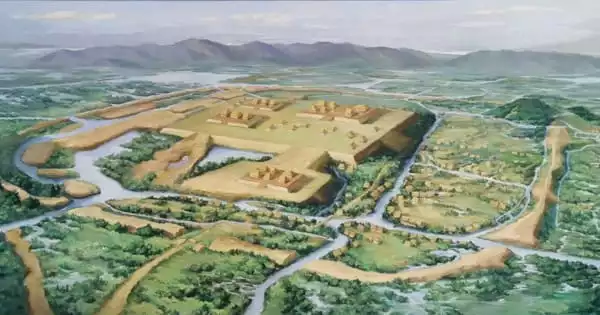A sophisticated society that built a city of canals known as “China’s Venice of the Stone Age” vanished 4,000 years ago. Historians have long debated whether the collapse of the Liangzhu culture was caused by war, disease, or famine. Climate change has now been identified as a major cause of civilization’s demise.
The Liangzhu excavation site in eastern China, known as “China’s Venice of the Stone Age,” is regarded as one of the most significant testimonies of early Chinese advanced civilization. The city already had a sophisticated water management system more than 5000 years ago. Until now, it has been unclear what caused the sudden collapse. Massive flooding caused by unusually intense monsoon rains caused the collapse, according to a new study published in the journal Science Advances by an international team led by Innsbruck geologist and climate researcher Christoph Spötl.
Researchers determined that an unusually heavy series of wet monsoons flooded Liangzhu City, forcing residents to abandon their homes, according to Ellen Phiddian of Cosmos magazine. The team describes how an overactive El Nio cycle caused massive flooding and the collapse of the community’s intricate infrastructure in the journal Science Advances.
The massive monsoon rains most likely caused such severe flooding of the Yangtze and its branches that even the most sophisticated dams and canals could no longer withstand these massive masses of water, destroying Liangzhu City and forcing people to flee.
Christoph Spötl
The archeological ruins of Liangzhu City are located in the Yangtze Delta, about 160 kilometers southwest of Shanghai. Around 5300 years ago, a highly advanced culture blossomed there, which is regarded as one of the earliest proofs of monumental water culture. This late Neolithic cultural site contains the earliest evidence of large hydraulic engineering structures in China. The walled city had an intricate network of navigable canals, dams, and water reservoirs. This system allowed for the cultivation of very large agricultural areas all year.
This is one of the earliest examples of highly developed communities based on water infrastructure in human history. Metals, on the other hand, were still unknown in this culture. During excavations, thousands of intricately crafted jade burial objects were discovered. Long undiscovered and undervalued in terms of historical significance, the archaeological site is now regarded as a well-preserved record of Chinese civilization dating back more than 5000 years. In 2019, Liangzhu was designated a UNESCO World Heritage Site.
However, the advanced civilization of this city, which had been inhabited for nearly 1000 years, came to an abrupt end. It is still unknown what caused it. “A thin layer of clay was discovered on the preserved ruins, pointing to a possible link between the demise of the advanced civilization and floods from the Yangtze River or the East China Sea. There was no evidence found for human causes such as warlike conflicts” Christoph Spötl, head of the Department of Geology’s Quaternary Research Group, explains. “However, no clear conclusions on the cause could be drawn from the mud layer itself.”

Dripstones store the answer
Caves and their deposits, such as dripstones, are among the most significant climate archives on the planet. They enable the reconstruction of climatic conditions above the caves up to 100,000 years ago. Because it is still unclear what caused the sudden collapse of the Liangzhu Culture, the research team looked for appropriate archives to look into a possible climatic cause of this collapse.
Geologist Haiwei Zhang from Xi’an Jiaotong University in Xi’an, who spent a year as a visiting researcher at the University of Innsbruck in 2017, collected stalagmites from the two caves Shennong and Jiulong, which are located southwest of the excavation site. “For years, these caves have been thoroughly explored. They are located in the same area as the Yangtze delta that is affected by the Southeast Asian monsoon, and their stalagmites provide a precise insight into the time of the collapse of the Liangzhu culture, which, according to archaeological findings, occurred around 4300 years ago “Spötl elaborates.
Data from stalagmites show that there was a period of extremely high precipitation between 4345 and 4324 years ago. The carbon isotope records measured at the University of Innsbruck provided evidence for this. The precise dating was accomplished through uranium-thorium analyses at Xi’an Jiaotong University, which has a measurement accuracy of ± 30 years. “This is incredibly precise in light of the temporal dimension,” the geologist says.
“The massive monsoon rains most likely caused such severe flooding of the Yangtze and its branches that even the most sophisticated dams and canals could no longer withstand these massive masses of water, destroying Liangzhu City and forcing people to flee.” The very humid climatic conditions persisted intermittently for another 300 years, according to cave data.
















